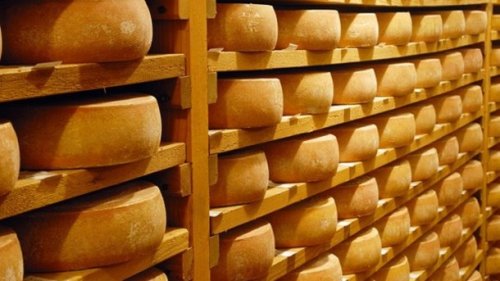
Agri Pulse | 2 August 2017
US dairy ramps up fight against EU food name protection
by Bill Tomson
The U.S. dairy sector is fighting harder than ever on several fronts to halt the European Union’s global efforts to block cheese producers in other countries from using names like Roquefort, Asiago and Gorgonzola on the products they export.
The EU has been making progress in countries including Japan, China and Mexico, but U.S.-based groups like the U.S. Dairy Export Council (USDEC) and the Consortium for Common Food Names (CCFN) are fighting back.
Japan, which announced the completion of negotiations on a massive Economic Partnership Agreement with the EU in July, tentatively agreed to protect as many as 210 “geographical indications,” or GIs, that appeared to bar U.S. producers from selling cheeses with names like Pecorino Romano and Fontina to the Japanese.
The EU has requested that Japan agree to protect 71 food names and 139 wine and spirit names as GIs under the trade pact, according to a report produced by USDA’s Foreign Agricultural Service.
While it’s been widely reported that the Japan-EU agreement closed the books on those GIs, Jaime Castaneda, USDEC senior vice president for trade policy, said that’s not the case.
“This is not a done deal,” Castaneda told Agri-Pulse. What Japan agreed to, according to Castaneda, was only to allow the EU to submit a list of names to be considered GIs with no guarantee that they will be approved, a system of GI approval similar to what was agreed upon in Trans-Pacific Partnership (TPP) negotiations.
“This transparency and invitation for dialogue on the proposed GI list is a very positive step," said CCFN Senior Director Shawna Morris in a recent statement. “CCFN has no objection to the protection of legitimate GIs – usually compound names that designate a specific geographic location – but we will continue to object whenever the EU falsely claims such generic single names as ‘feta’ cheese and ‘prosecco’ wine, for example.”
The stakes are very high, USDEC CEO Tom Vilsack told lawmakers last week during a House Agriculture Committee hearing. The U.S. exports about $5 billion worth of dairy products annually, but it needs to do more to expand opportunities for U.S. farmers and processors to continue to grow their businesses, he said.
“If we’re going to increase exports – and our goal is to try to get from 15 percent of our volume to 20 percent of our volume – cheese is going to be incredibly important,” said Vilsack, who was USDA secretary during the Obama administration. “If we allow the Europeans to monopolize certain terms of cheeses, that will create no market competition. That will make it difficult to market much of what we produce in this country.”
Japan’s GI process allows the U.S. or other nations to challenge any approvals, and that’s exactly what groups like the USDEC, CCFN and the Wine Institute are preparing to do.
“We call on producers and organizations around the world to also look carefully at the list and send objections if they find a name to be generic – and therefore a name that should not be granted solely to the EU,” Morris said.
The Trump administration also may weigh in with feedback, said Castaneda.
USDEC is now finalizing objections on a number of GIs proposed under a deal between the EU and China, and Castaneda – who is also the executive director of the CCFN – said he expects the U.S. government to also submit an objection.
The EU-China “100 for 100” agreement proposes to protect 100 EU and Chinese food, wine and spirit names and the deadline for public comment is today.
The USDEC and CCFN have both praised the transparency in Japan and China’s approval processes, but Castaneda said the outlook is not the same when it comes to Mexico due to the lack of a legal system to approve GIs.
Negotiations are expected to begin in earnest this month between the U.S., Canada and Mexico to overhaul the North American Free Trade Agreement, and the U.S. dairy industry hopes the new deal will include a system like Japan’s that would allow the U.S. to contest any new GI protections.
It’s too late for Canada because the country already agreed to the EU’s demands for food name protections in the Comprehensive Economic and Trade Agreement (CETA) that was announced last year.
The U.S. still has time to prevent the same thing from happening between Mexico and the EU, but time is running out.
“Mexico right now is negotiating with the EU for an FTA (free trade agreement), and what we’re concerned about is which negotiation gets completed first – the modernization of NAFTA that could potentially insert the GI protections that were in the TPP agreement, or will Europe … enter into an FTA (with Mexico) that restricts Mexican use of GIs,” Vilsack said. “It’s a critical issue and one that prompts us to encourage bilateral discussions and the NAFTA modernization discussions expeditiously without delay.”
Castaneda said he expects Mexico to soon unveil a list of the GI name protections that the EU is seeking in their trade talks even though negotiations are still far from complete.
“We can’t afford to lose this race with the EU,” Vilsack said. “Mexico is our number-one market … for dairy products, so clearly what happens here will make a difference to the nearly 42,000 (U.S.) operations that are producing product.”